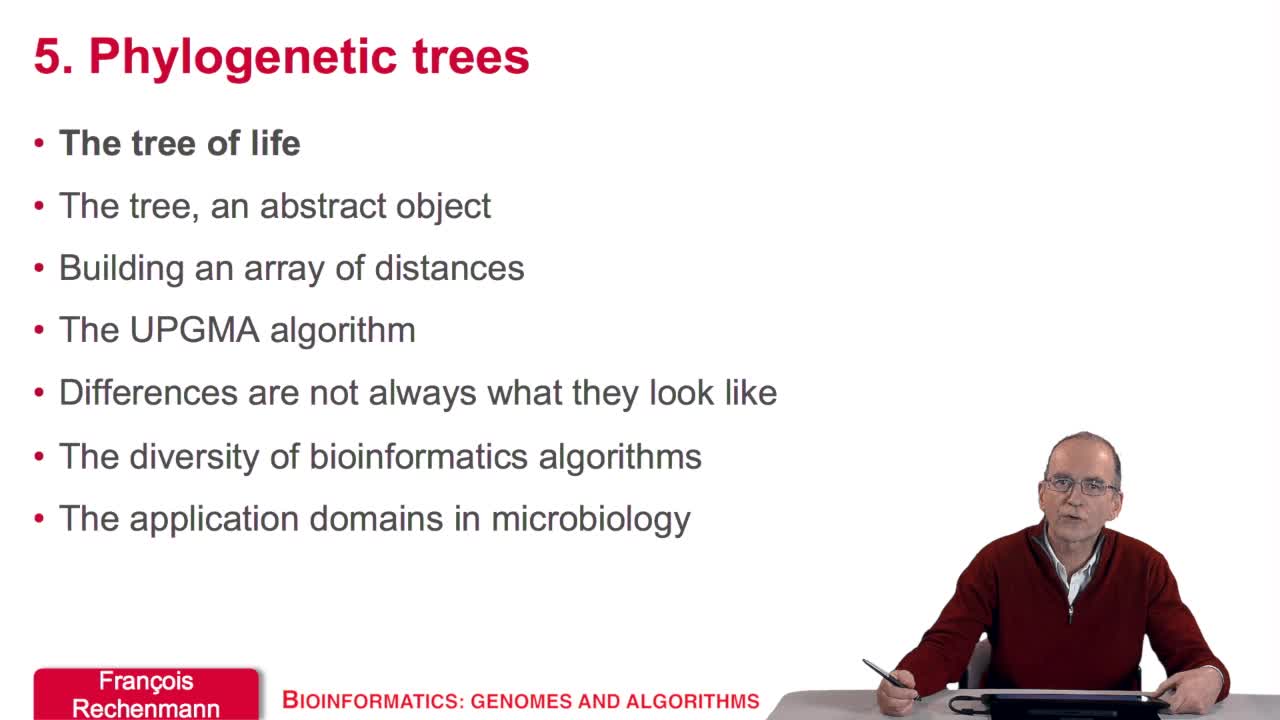Bioinformatics: Genomes and Algorithms
Description
About the Course
In this course, you will discover how computer science supports the interpretation of the text of genomes.
Running the adequate programs, a computer may produce predictions on
the location of the thousands of genes in a living organism and the
functions of the proteins these genes code for.
You are not a biologist? Attending this course, you will be
introduced to several entities and processes involved in the
interpretation of the genomic texts: cell, chromosome, DNA, genome,
genes, transcription, translation, proteins and many more.
You are not a computer scientist? This course is also an
introduction to algorithms on character strings: pattern searching,
sequence similarity, Markov chain models, or phylogenetic tree
reconstruction are some basic algorithms which are implied in genome
sequence analysis and will be explained.
You are neither a biologist nor a computer scientist? This
course is a great opportunity to a joint approach to genomics and
algorithmics, or if you prefer, to algorithmics and genomics.
Pre-Requisites
A scientific culture will make easier the understanding of the notions studied.
Course Summary
The material of this course come from a MOOC delivered on France Université Numérique :
https://www.fun-mooc.fr/courses/inria/41007/session01/about
Collections
- niveau 1 niveau 2 niveau 3
- document 1 document 2 document 3
5. Phylogenetic trees
RECHENMANN François
- niveau 1 niveau 2 niveau 3
- document 1 document 2 document 3
4. Sequences comparison
RECHENMANN François
- niveau 1 niveau 2 niveau 3
- document 1 document 2 document 3
3. Gene prediction
RECHENMANN François
- niveau 1 niveau 2 niveau 3
- document 1 document 2 document 3
2. Genes and proteins
RECHENMANN François
- niveau 1 niveau 2 niveau 3
- document 1 document 2 document 3






